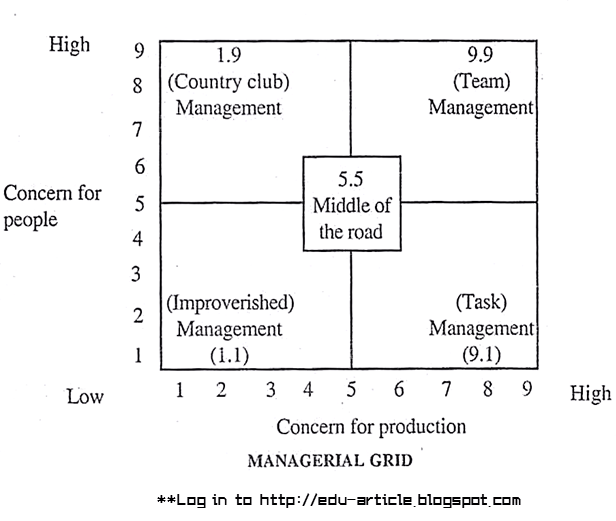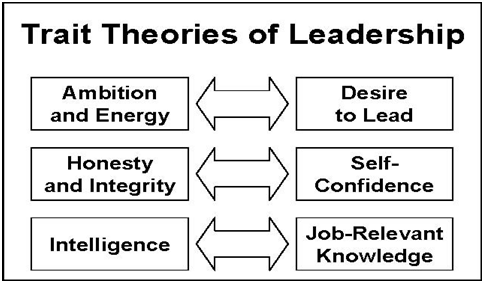The managerial grid model was developed by R. R. Blake and J. S. Mouton in the 1960s. It shows five different types of leadership styles in a grid.
Let’s understand the managerial grid model;
What Is The Managerial Grid Model of Leadership?
The managerial Grid Model of Leadership indicates five basic leadership styles of practicing managers representing various combinations.
The Managerial Grid Model helps Managers to analyze their leadership styles through a technique known as grid training.
Also, Managers can identify how their concerns for production and people with the Managerial Grid Model.
The two dimensions of leadership, viz. concern for people on the ‘vertical’ axis and concern for production on the ‘horizontal’ axis, have been demonstrated by R. R. Blake and J. S. Mouton in the form of the Managerial Grid Model.
How Managerial Grid Model Developed?
Robert R. Blake and Jane S. Mouton developed the Managerial Grid Model Developed in the 1960s and it has evolved in the following decades.
Blake and Mouton’s Managerial Grid Model was one of the most influential management models in the 1960s; it also provided a foundation for even more complex contingency approaches to leadership.
Notable amongst these studies are Fiedler’s Contingency model (which considers the match between the manager’s personality and the situation) and Tannenbaum and Schmidt’s Continuum of Leader Behavior (which stresses that the leader understands not only himself but also the other persons in the organization along with the social environment as well.
The Managerial Grid Model was the next logical step in evaluating management thinking.
Blake and Jane Mouton based the framework of Grid on the sound logic of noted theorists Abraham Maslow and Douglas McGregor.
The Grid expanded upon McGregor’s and others’ theories at the time to provide a richer and more complete design between the manager’s concerns for production versus their concern for interpersonal relationships.
Although later criticized and subjected to further revision by its creators, the original Managerial Grid Model remains an important model of managerial behavior that continues to be studied and utilized.
Blake and Mouton strongly argue that style (9,9) is the most effective management style because it improves productivity and causes high employee satisfaction, low turnover, and absenteeism.
It is widely used as a technique of managerial training and for identifying various combinations of leadership styles.
Advantages of the Managerial Grid Model
- Managers help to analyze their leadership styles through a technique known as grid training.
- Managers identify how for their concerned about production and people.
Limitations of the Managerial Grid Model
- The model ignores the importance of internal and external limits, matter, and scenarios.
- Some more aspects of leadership can be covered but are not.
Two Dimensions of Leadership in Managerial Grid Model
The managerial Grid Model is based on two behavioral dimensions; concern for people and concern for production.
Concern For People
This is the degree to which a leader considers the needs of team members, their interests, and areas of personal development when deciding how best to accomplish a task.
Concern For Production
This is the degree to which a leader emphasizes concrete objectives, organizational efficiency, and high productivity when deciding how best to accomplish a task.
Five Leadership Styles in Managerial Grid
They identified 5 basic leadership styles of practicing managers representing various combinations of the two dimensions above, as shown in the following figure;

As shown in the figure, the model is represented as a grid with concern for production as the X-axis and concern for people as the Y-axis; each axis ranges from 1 (Low) to 9 (high).
The five resulting leadership styles are as follows:
- (1,9) Country Club Style Leadership High People and Low Production
- (9,1) Produce or Perish Leadership- High Production and Low People
- (1,1) Impoverished Leadership-Low Production and Low People:
- (5,5) Middle-Of-The-Road Leadership-Medium Production and Medium People
- (9,9) Team Leadership-High Production and High People
(1,9) Country Club Style Leadership High People and Low Production
(1,9) Country Club Style Leadership style leader is most concerned about the needs and feelings of his or her team members.
In this environment, the relationship-oriented manager has a high concern for people but a low concern for production.
He pays much attention to the security and comfort of the employees. He hopes that this will increase performance.
He is almost incapable of employing the more punitive, coercive, and legitimate powers. The organization will end up to be a friendly atmosphere but not necessarily very productive.
The (1,9) boss mainly uses reward power to preserve discipline and to support his subordinates in accomplishing their goals.
Conversely, this manager cannot employ more disciplinary coercive and legitimate powers. This inability results from his fear that using such powers could jeopardize his relationships.
This inability results from his fear that using such powers could jeopardize his relationships.
Thus, the supervisor seldom attempts to impose his will on others, preferring to accept the ideas of others instead of forcing his own.
Employees in this type of work environment go about their day working at their own pace on projects they enjoy and with coworkers to whom they are attracted.
(9,1) Produce or Perish Leadership- High Production and Low People
(9,1) Produce or Perish Leadership management style is characterized by a concern for production as the only goal.
Employees are viewed as obstacles to performance results unless obedience to the manager’s wishes is explicitly granted.
In this style, the manager is authoritarian or compliant. A task-oriented manager, he has a high concern for production and a low concern for people.
He finds employee needs unimportant and simply a means to an end. He provides his employees with money and expects performance back.
There is little or no allowance for cooperation or collaboration. He pressures his employees through rules and punishments to achieve the company’s goals.
This type of leader is very autocratic, has strict work rules, policies and procedures, and views punishment as the most effective means to motivate employees.
(1,1) Impoverished Leadership-Low Production and Low People:
(1,1) Impoverished Leadership is a delegate-and-disappear management style and a lazy approach. The manager shows a low concern for both people and production.
He or she avoids getting into trouble. His main concern is not to be held responsible for any mistakes.
Managers use this style to preserve jobs and seniority, protecting themselves by avoiding getting into trouble.
This leader is mostly ineffective. He or she has neither a high regard for creating systems for getting the job done nor for creating a work environment that is satisfying and motivating.
The result is a place of disorganization, dissatisfaction, and disharmony.
(5,5) Middle-Of-The-Road Leadership-Medium Production and Medium People
(5,5) Middle-Of-The-Road Leadership is a kind of realistic medium without ambition. It is a balanced and compromised style.
The manager tries to balance the company’s competing goals and the workers’ needs.
The manager gives some concern to both people and production, hoping to achieve acceptable performance. He believes this is the most anyone can do.
Consequently, compromises occur where neither the production nor the people’s needs are fully met.
The supervisor views it as the most practical management technique. It is also an outcome when production and people issues are seen as a conflict.
The defining characteristic of this style “is not to seek the best position for both production and people… but to find the position between both, about halfway.”
When dealing with subordinates, the (5,5) manager prefers relaxed and shared conversations, allowing him to slay popularly.
Group membership is also enjoyed as committees allow’ the supervisor to spread the responsibility for decision-making.
(9,9) Team Leadership-High Production and High People
In (9,9) Team Leadership, the manager pays high concern to people and production. Motivation is high. This soft style is based on the propositions of Theory Y by Douglas McGregor.
The manager encourages teamwork and commitment among employees.
This style emphasizes making employees feel part of the company family and involving them in understanding the organizational purpose and determining production needs. This method relies heavily on making employees feel they are constructive parts of the company.
And this will result in a team environment based on trust and respect, which leads to high satisfaction and motivation and, as a result, high production.
In a (9,9) system, the manager strives for sound and imaginative opinions, letting others partake in the decision-making process.
He is not afraid to use ideas that are divergent from his own but rather focuses on the value of the ideas.
Emotions and thoughts are used to solve .problems through teamwork because this supervisor is concerned with arriving only at the best possible solutions.
A (9,9)-oriented manager can act sensibly to bring about effective results, maintaining consistency but finding innovative solutions to fit unique problems and unusual circumstances”.
Another of the manager’s primary goals in this system is to identify barriers that his subordinates may be encountering and then find a way to remove them.
This creates a team environment based on trust and respect, which leads to high satisfaction and motivation and, as a result, high production.

![Leadership: Definition, Nature, Styles [Comprehensive Guide]](https://www.iedunote.com/img/1033/leadership.jpg)